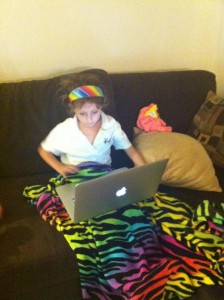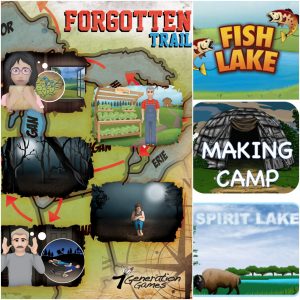 When my oldest daughter was 2.5 years old, she decided to learn the alphabet and had me drill her on flashcards until she got it down. Differentiating Z and S was the biggest challenge, but once she had that down then she was off. We never worried about her doing her homework or studying for spelling or doing well on tests, she was just on top of it. (I would learn with my second and third children that not all children make the process so easy.)
When my oldest daughter was 2.5 years old, she decided to learn the alphabet and had me drill her on flashcards until she got it down. Differentiating Z and S was the biggest challenge, but once she had that down then she was off. We never worried about her doing her homework or studying for spelling or doing well on tests, she was just on top of it. (I would learn with my second and third children that not all children make the process so easy.)
However, after a while, I did start to worry about her in school. I worried if she was learning enough, being engaged enough. For the first couple of years in school, she just kind of breezed by, but it was transitional kindergarten/junior kindergarten and kindergarten, so I didn’t really worry about it. I didn’t expect her to be challenged by things like Shakespearean sonnets or geometry proofs at 5. I figured it was about about learning not to hit the kid next to you.
Then, right when she was about to enter first grade, we moved. It was the third move in as many years – and her fourth school in four years, having made the preschool to TK jump before that. We had a couple of Catholic schools on our list to look at (personally, as a product of Catholic education, that’s the route we wanted to go) – but we stopped our search after the first. It was a small school that had recently received a grant to completely convert their curriculum to a tech-integrated program.
Blended learning is when part of instruction is done by the teacher and part is technology-driven– hence, a blend of both. As someone who not only worked in edtech, but who had spent a large part of my elementary school years either bored or shuttled between classes (going up a grade for some subjects and then participating my grade for other subjects), I would have loved to have an option where I could go at my own pace – something that blended learning allows. I don’t just pretend that I think “blended learning” is good because it’s my job. I subscribe to it so wholeheartedly that it’s the approach we sought out for our own children’s education.
 After hearing the principal talk about the program, the improvement the school had seen in tests scores and – most importantly to us – the level of student engagement they’d seen, we signed up on the spot.
After hearing the principal talk about the program, the improvement the school had seen in tests scores and – most importantly to us – the level of student engagement they’d seen, we signed up on the spot.
But the real aha moment came about a month or two into the school year, when our daughter came home and made an announcement:
“I like this school,” she said. “For the first time, I’m actually learning things.”
That a first grader was able to have this kind of insight was slightly jaw-dropping to me, but it was also amazing because it reinforced everything we are doing at 7 Generation Games and the choice that we had made for her when it came to school. And ever since then, it allows her to continue to flourish in ways that traditional approaches to education would have NEVER allowed.
In fact, when the next year, we made the very unusual request to have her skip a grade, it was in fact, her blended learning data that made her principal agree to the move for the first time in his 30 years in education – but that’s a post for another time.
When I’m talking about the edtech sales process, one of the things I often point out is the difference between when an administrator is making a purchase and a parent. An administrator has to take a broad view – they don’t make a purchase with just a single kid in mind, but weighing the interests of thousands of kids. When a parent makes a decision, it’s the exact opposite: “I’m buying this because I think it’s good for my kid.”
There is a lot of data around blended learning and its efficacy. I have read a lot of the those studies because I need to be able to cite them in my work life and to be in the know around the discussions that come up when you run an edtech company, to be able talk about the impact blended learning has had on thousands, even millions of kids. Is it a solution for every child and every issue in education today? No, because no one thing is. But how do I know blended learning works? Because I’ve seen it work for my own kid.


Pingback: 7 Ventajas de las tecnologías educacionales – Strong Mind Studios